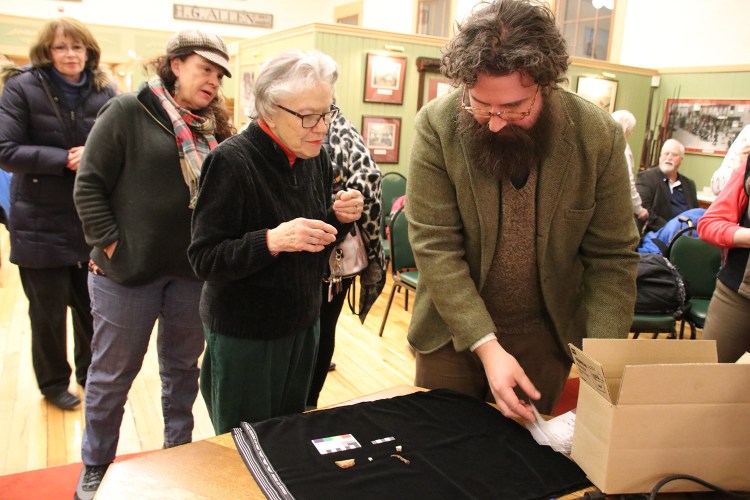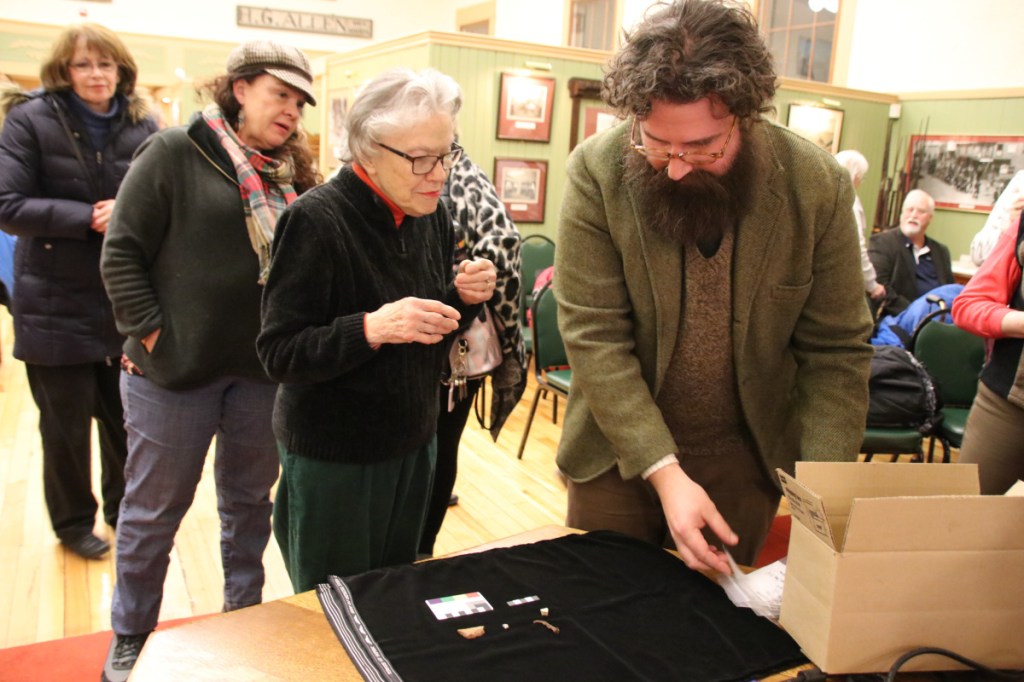SPRINGVALE — An archaeological dig in south Sanford last summer turned up some artifacts dating from the 1800s and earlier, but there was no evidence that the mid-1700s Phillipstown Garrison existed on that spot.
Nevertheless, those who excavated 29 test holes, each measuring 50 centimeters by 50 centimeters during the two-day dig, believe the garrison may have been located close by – perhaps under one parking lot or another in the area off Route 109 in south Sanford, near Sanford Inn and a former restaurant.
“I believe we were catching an edge, and that it could be around a place where we can’t dig,” said Arthur Anderson, a professor of anthropology and archaeology at the University of New England. He said his perusal of the artifacts, maps and other materials leads him to believe they were, in general, in about the right area.
The dig took place over two days in late August and was organized by Dana Peterson, a retired architect and history buff who formulated the idea of a dig to enhance the Sanford 250th Celebration, marking the city’s incorporation in 1768. Peterson did exhaustive research to try to pinpoint the general area where the garrison stood, poring over deeds at the York County Registry of Deeds and examining historical texts.
Anderson brought findings from the dig to the Sanford Springvale Historical Society for a presentation on Thursday.
He displayed some of the artifacts, including small pieces of ceramics along with hand-wrought and early cut nails. There also were shards of red ware and brick, which are both nearly impossible to date, Anderson said.
The earliest ceramic found was a shard of Staffordshire slipware, which predates 1800. There were shards of creamware, thought to date before 1820 or 1800, and a tiny piece of blue-edged pearlware dating to around 1800.
Anderson was surprised at the small amount of artifacts recovered, and said the site was remarkably clean.
Deb Van Gorder of North Berwick was one of the volunteers who dug at the site. She said she loved the experience and hopes to take part in another. Van Gorder was joined by her sister, Beth Lyon, who came up from her home in Connecticut for the dig.
“It was a first for me,” Van Gorder said. “It’s fascinating.”
She was especially pleased to have found one of the nails.
Archaeologists and volunteers had hoped to find evidence of the garrison built 24 years before the area known as Phillipstown was incorporated as Sanford in 1768.
A number of garrisons were built at the time, as unrest between Colonists and natives proliferated during the lengthy period referred to as the French and Indian Wars. King George’s War was one of them and erupted in 1744 – a year after the General Court of Massachusetts appropriated 1,280 British pounds to defend the eastern settlements. In the same year the war broke out, 100 British pounds were appropriated by the Massachusetts General Court to build a garrison at Phillipstown, according Edwin Emery’s “History of Sanford, Maine 1660 to 1900.” At the time, Maine was part of Massachusetts.
Emery wrote that the order said the garrison was to be built of stockade or square timber, but which was actually used is unknown.
The precise year it was built is also unknown.
“They were given 100 pounds and told to secure quickly,” Anderson said. And, he added, it isn’t known if the garrison was left to rot in place, or if it was torn down and the building materials repurposed.
“It was occupied until 1763 and was listed on a British map in 1774,” Peterson said in August, before the dig. “And it was probably here through the Revolution.”
The city of Sanford appropriated $2,000 to help fund the dig, which was also sponsored by the Sanford Springvale Historical Society.
The artifacts will be turned over to the society for permanent protection.
Peterson said he was happy with the dig.
“I’m glad we did it,” he said. “It was great to bring people together, and we know more about the history of Sanford that we didn’t know before.”
Tammy Wells can be contacted at 780-9016 or at:
twells@journaltribune.com
Send questions/comments to the editors.




Comments are no longer available on this story